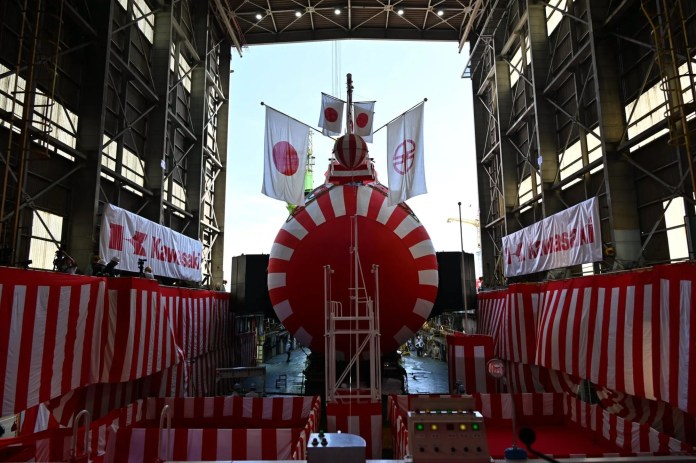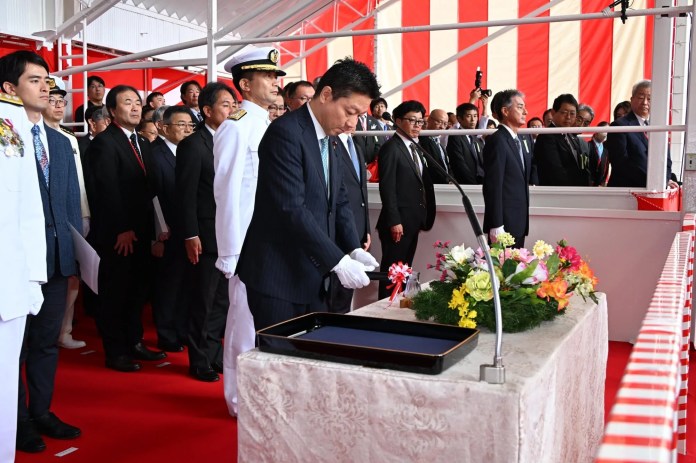In a ceremony held on October 14 at the Kawasaki Heavy Industries shipyard located in the city of Kobe, the Japan Maritime Self-Defense Force celebrated the launching of the sixth of its new Taigei-class attack submarines. The new fleet submarine will carry the name “Sogei” and the pennant number SS 518, with one of its main features being the installation of the new Kawasaki 12V 25/31 diesel engines, as well as being one of the first vessels of the institution to include specific facilities for female personnel.
Expanding on details, it is worth noting that the launching of the submarine represents an important milestone in the construction of the vessel, for which Tokyo invested more than 73.6 billion yen (about 484 million dollars), with the expectation that it may enter service in March 2027. It is also possible to mention that the sixth unit of the Taigei class will be the first in the entire force to bear the name Sogei, whose meaning in Japanese is “blue whale.”

As such, the vessel represents another step in the formation of the eight-submarine Taigei-class fleet that the Japan Maritime Self-Defense Force seeks to assemble in order to strengthen its deterrence capabilities in the Indo-Pacific. So far, the institution had already successfully incorporated the Taigei (SS 513) into service in March 2022, followed by the Hakugei (SS 514) in March 2023, and the Jingei (SS 515) in March of the following year. Additionally, during the course of this year, the force added the Raigei (SS 516) in March and is conducting final tests on the Chogei (SS 517) in anticipation of its planned entry into service in 2026.
Recalling some of the class’s characteristics, we can mention that each submarine has a length of 84 meters and a beam of 9.1 meters, which encompass the 3,000 tons they displace. Regarding their crew, the new Japanese submarines have space for 70 personnel, while in terms of sonar, the Taigei class incorporates the modern high-performance ZQQ-8 systems. On the other hand, each submarine is equipped with Type 18 torpedoes, which stand out for incorporating improvements in propulsion and target detection compared to the previously used Type 89, as well as UGM-84L Harpoon Block II anti-ship missiles with a range of 284 kilometers; it was also recently indicated that the new Type 12 anti-ship missiles will be added.

Returning to a detail mentioned in the opening lines, it is important to emphasize that the Taigei class currently features two different types of propulsion systems, with this change occurring from the third unit built onward. Specifically, until the construction of the Jingei, two Kawasaki 12V 25/25SB diesel engines were used as the main systems, which from the Raigei onward were replaced by the aforementioned Kawasaki 12V 25/31 engines. This change was made considering compatibility with the new, more efficient snorkel system for power generation, which allows the submarine to reach speeds of up to 20 knots.
Moreover, the Taigei class is also the first to incorporate new lithium-ion batteries instead of the older lead-acid ones, developed by the local company GS Yuasa. This detail is significant, considering that it would make Japan the first country to integrate this type of battery in its attack submarines, with South Korea expected to be the second to take a similar path with its future Jang Bogo-3 Batch II.
*Image credits: @JMSDF_PAO on X
You may also like: Nuclear-powered submarines: a possibility for the Japan Maritime Self-Defense Force?


AloJapan.com